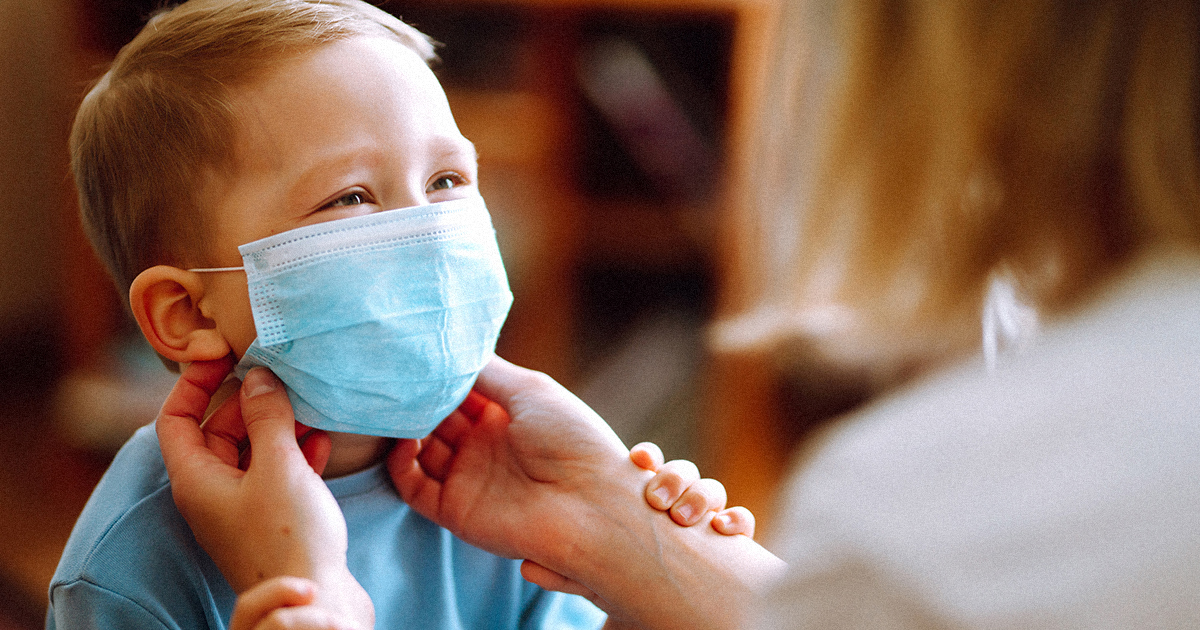Back to the Classroom: Avoid Common School Illnesses with These Tips
4 minute read
Germs of every kind run rampant in schools. But the presence of COVID-19 makes this topic of common school illnesses more serious than usual. The close proximity, the shared supplies, the coughing, the runny noses, and the constant physical contact (poking, tagging, high fiving, hugging), increase the spread of germs and illness.
The priority right now is keeping kids and families safe and healthy. That may look different around the country and for each family. If you have the opportunity for your kids to learn somewhere other than a crowded school, it may be the most responsible option to take.
Some families are turning to online tutors or even learning “pods” where kids rotate at-home instruction between select neighborhood houses. Of course, these alternatives require money and resources that may be difficult to come by for some families. But if at-home schooling is an option, it’s worth exploring.
Avoid Common School Illnesses
Here are just a few of the most common school illnesses that infect the classroom during a typical school year:
- Conjunctivitis (Pink Eye) – An extremely contagious inflammatory infection that is caused by bacteria getting in the eye. Kids should stay home until all the redness is gone from their eyes.
- Hand, Foot, and Mouth Disease – An untreatable virus that causes painful sores in the mouth and on hands and feet. It can also spread very quickly and kids should remain home until all their blisters have healed and their fever is gone.
- Strep throat – Spreads like wildfire in a school environment and requires antibiotics for anyone infected.
- Rhinovirus – Responsible for most cases of the common cold, this virus spreads rapidly among kids because when it’s “just a cold” they still go to school, daycare, or even friends’ houses. And there’s not much you can do for it except treat the symptoms.
- Influenza – The start of the school year means the start of the flu season because the flu can spread with just a cough or a sneeze and can keep kids out of school for days or weeks at a time. The CDC reported that 185 children died from the flu during the 2017-2018 influenza season. So, while it is uncommon, it can also be a very serious illness.
- COVID-19 – While this one is new to the list for 2020, it is by far the most concerning. While the early speculation was that this virus has little impact on young people, (there are questions about this), the larger issue is if kids pick up the virus and spread it to their relatives who are more prone to serious consequences. With no approved vaccine or drug treatment currently available, the threat of this illness should be top of mind when considering whether or not to send your kids back to school.
Common School Illnesses Prevention
We really are living in a new normal. Because we’re months into the pandemic, there are some strategies identified by experts that can be effective in the fight against COVID-19. Below are some ways you can help keep everyone safe when children are back in any type of school environment. These tips can apply to school administrators as well as anyone taking part in homeschooling.
Wash hands often.
Of course, we tell kids to wash their hands so they don’t get sick, but their education on this subject could go a lot deeper. Read books about germs and how they spread, and incorporate activities that allow them to see what you’re talking about. Make sure they have lots of opportunities to wash their hands throughout the day, or that hand sanitizer is readily available in the classroom.
Avoid close contact and sharing of supplies.
Most classrooms won’t allow for each child to be six feet apart at all times, but try to maintain as much distance between students as possible throughout the school day to minimize contact. Tape on the floors and in the hallways will serve as good visual reminders for everyone to keep their distance.
Also, whenever possible, provide your child with their own set of supplies that they can keep at their desk so they are not sharing pencils, markers, rulers, etc. with other children. We always try to teach our children to be generous and that sharing is caring, but it has to be communicated that we aren’t sharing right now in order to stay safe and deter school illnesses.
Wear a mask that covers the nose and mouth when around others.
Some states have a mandatory mask order in place. As a parent, teacher, or administrator you can do a lot to make mask-wearing a positive experience for children.
Before your child heads back to school, have a mask decorating party. Pick their favorite color or design and let them make their mask personal.
Teachers and administrators can create themed masks, too, so that children are excited about what new mask designs they’ll see next.
Clean and Disinfect
Teachers can’t spend their entire day sanitizing every surface that has been touched. But doing things like handing out disinfectant wipes at the end of the day, or spraying down surfaces and letting kids wipe them down with disposable towels can be good ways to keep a healthy routine.
At home, spray or wipe down backpacks or any other supplies that are going back and forth to limit the amount of germs entering your home. It might be a good idea to create an area in the garage or entryway for your kids to hang their backpacks and put their shoes so they aren’t being dragged throughout the house.
Build Immunity
It’s so important to take good care of your body with good sleep, plenty of nutritious food, lots of water, and exercise. As summer winds down, try to get a good sleep routine for your kids back in place before the start of the year, and it might be a good idea to start limiting the all-day grazing of the kitchen that tends to happen when school is out.
Know when to stay home.
Monitoring your health daily is so important right now. If you or your child have any COVID-19 symptoms, please follow CDC guidelines.
Your school should have a plan in place to support any student or staff absences, school dismissals and/or closures.
